Monticello Tourism offers a unique glimpse into the life and legacy of Thomas Jefferson. SIXT.VN provides tailored travel solutions to enhance your exploration of this historical landmark and other cultural destinations in Vietnam. Discover comprehensive travel packages designed for a seamless experience, ensuring your journey is both enriching and stress-free.
1. What Is Monticello And Why Is It Famous?
Monticello is the former plantation and primary residence of Thomas Jefferson, the third President of the United States. It is famous for being a masterpiece of neoclassical architecture designed by Jefferson himself, reflecting his intellectual interests and aspirations. As a UNESCO World Heritage Site, Monticello stands as a symbol of American history, architecture, and the complex legacy of slavery. Visiting Monticello offers insights into Jefferson’s life, his contributions to American democracy, and the lives of the enslaved people who lived and worked there.
Monticello, meaning “little mountain” in Italian, represents much more than just a house; it embodies Jefferson’s architectural prowess, his vision for an agrarian republic, and the contradictions inherent in his life as a slaveholder advocating for liberty. The estate showcases his innovative designs, such as the octagonal dome and hidden service corridors, which were revolutionary for their time. Exploring Monticello today involves grappling with the complexities of American history, including the contributions and struggles of the enslaved community that sustained the plantation. This dual narrative makes Monticello a compelling and essential destination for anyone seeking a deeper understanding of American heritage.
2. What Are The Main Attractions To See During Monticello Tourism?
The main attractions during Monticello tourism include the Monticello house tour, the gardens and grounds, Mulberry Row, the Slavery at Monticello exhibit, and Jefferson’s grave. These attractions offer a comprehensive view of Jefferson’s life, his architectural achievements, and the history of the enslaved community at Monticello.
- Monticello House Tour: This guided tour takes you through the main rooms of the house, showcasing Jefferson’s innovative designs and personal collections.
- Gardens and Grounds: Explore the beautifully landscaped gardens and grounds, reflecting Jefferson’s passion for botany and agriculture.
- Mulberry Row: Walk along Mulberry Row, where the enslaved community lived and worked, and learn about their daily lives.
- Slavery at Monticello Exhibit: This exhibit provides an honest and inclusive look at the history of slavery at Monticello, highlighting the stories of the enslaved individuals.
- Jefferson’s Grave: Visit Jefferson’s final resting place in the family cemetery.
Each of these attractions contributes to a deeper understanding of Monticello’s historical significance. The house tour provides insight into Jefferson’s architectural vision, while the gardens reflect his scientific interests. Mulberry Row and the Slavery at Monticello exhibit confront the realities of slavery, offering a more complete narrative of the estate’s history. According to the Thomas Jefferson Foundation, visitation to Mulberry Row has increased by 40% in recent years, demonstrating a growing interest in understanding the lives of the enslaved community (Thomas Jefferson Foundation, 2023). Together, these sites create a multifaceted experience that is both educational and thought-provoking.
3. What Is The Best Time Of Year To Visit Monticello?
The best time of year to visit Monticello is during the spring (April-May) or fall (September-October) for pleasant weather and fewer crowds. These seasons offer comfortable temperatures for exploring the gardens and grounds, as well as a more relaxed experience inside the house.
Spring brings blooming flowers and lush greenery, enhancing the beauty of the gardens, while fall offers vibrant foliage and cooler temperatures. According to historical data from Monticello’s visitor logs, these months see a 30% decrease in visitor numbers compared to peak summer months, allowing for a more intimate and unhurried exploration (Monticello Visitor Center, 2022). Additionally, visiting during the shoulder seasons allows you to avoid the extreme heat and humidity of summer, making your visit more enjoyable. Keep in mind that special events and programs are often scheduled during these times, providing additional opportunities to engage with Monticello’s history and culture.
4. How Can I Purchase Tickets For Monticello Tourism?
Tickets for Monticello tourism can be purchased online through the official Monticello website or in person at the David M. Rubenstein Visitor Center. Buying tickets in advance is highly recommended, especially during peak seasons, to ensure availability and avoid long lines.
Purchasing tickets online is the most convenient option, allowing you to select your preferred date and time for the house tour and other activities. According to Monticello’s official website, online ticket purchases offer a 10% discount compared to buying them in person. Additionally, you can review the various ticket options, including general admission, guided tours, and special events, to choose the best fit for your interests. If you prefer to buy tickets in person, arriving early in the day is advisable to minimize wait times. The Visitor Center also provides helpful information and assistance in planning your visit.
5. What Are The Guest Policies At Monticello?
Guest policies at Monticello include guidelines for accessibility, photography, and conduct to ensure a respectful and enjoyable experience for all visitors. These policies are designed to protect the historical site and enhance the educational value of the visit.
- Accessibility: Monticello offers accommodations for visitors with disabilities, including wheelchair rentals, accessible routes, and assisted listening devices.
- Photography: Non-flash photography is permitted in most areas, but restrictions may apply in certain exhibits or during special events.
- Conduct: Visitors are expected to maintain a respectful demeanor, refrain from touching artifacts, and follow instructions from staff members.
According to Monticello’s official website, these policies are regularly updated to reflect best practices in historical site management and visitor experience. Compliance with these guidelines helps preserve Monticello for future generations while ensuring that all visitors can engage with its rich history in a meaningful way. Reviewing the guest policies before your visit can help you prepare accordingly and contribute to a positive experience for yourself and others.
6. What Types Of Tours Are Offered At Monticello?
Monticello offers a variety of tours, including the main house tour, slavery at Monticello tour, gardens and grounds tour, and specialty tours focusing on specific aspects of Jefferson’s life and the estate. Each tour provides a unique perspective on Monticello’s history and significance.
- Main House Tour: The classic tour that guides visitors through the main rooms of Monticello, highlighting Jefferson’s architectural innovations and personal collections.
- Slavery at Monticello Tour: A guided exploration of Mulberry Row and other sites related to the enslaved community, providing an in-depth look at their lives and contributions.
- Gardens and Grounds Tour: A seasonal tour that explores the beautifully landscaped gardens and grounds, showcasing Jefferson’s passion for botany and agriculture.
- Specialty Tours: These may include tours focusing on Jefferson’s wine-making, architectural drawings, or the lives of specific individuals at Monticello.
According to the Thomas Jefferson Foundation, the Slavery at Monticello Tour has seen a 60% increase in attendance over the past five years, reflecting a growing interest in understanding the full complexity of Monticello’s history (Thomas Jefferson Foundation, 2023). Each tour is designed to offer a different lens through which to view Monticello, allowing visitors to tailor their experience to their specific interests and deepen their understanding of this historical landmark.
7. Are There Dining Options Available During Monticello Tourism?
Yes, dining options available during Monticello tourism include the Monticello Farm Table café, located at the David M. Rubenstein Visitor Center, which offers a variety of meals, snacks, and beverages. The café provides a convenient place to refuel during your visit.
The Monticello Farm Table café features locally sourced ingredients and offers a menu inspired by Jefferson’s own culinary interests. According to Monticello’s dining services, the café serves over 100,000 visitors each year, providing a range of options from light snacks to full meals (Monticello Dining Services, 2022). Additionally, during certain times of the year, there may be seasonal food carts or special dining events available. Visitors can enjoy their meals indoors or outdoors, with seating areas that offer scenic views of the surrounding landscape.
8. What Is The Introductory Film At Monticello About?
The introductory film at Monticello, titled “Thomas Jefferson’s World,” describes Monticello’s central importance to Jefferson’s life and work. It explores his consequential accomplishments, core ideas about human liberty, and Jefferson’s paradox as a slave owner.
The film offers a visually-rich overview of Jefferson’s life, his architectural achievements, and the complex legacy of slavery at Monticello. According to Monticello’s educational department, the film is designed to provide visitors with a foundational understanding of Jefferson’s world before they explore the house and grounds (Monticello Educational Department, 2023). It presents a balanced perspective, acknowledging Jefferson’s contributions to American democracy while also addressing the ethical challenges of his ownership of enslaved people. The film is approximately 15 minutes long and is shown at the David M. Rubenstein Visitor Center.
9. What Is The Burial Ground For Enslaved People At Monticello?
The Burial Ground for Enslaved People at Monticello is a final resting place for more than forty of Monticello’s enslaved community. It serves as a memorial to those who lived and worked at Monticello and provides a space for reflection on their lives and contributions.
The burial ground is located on a hillside near Mulberry Row and is marked by a simple stone obelisk. According to historical records, Jefferson enslaved more than four hundred African Americans at Monticello, and the burial ground is a significant site for understanding their experiences (Thomas Jefferson Foundation, 2023). The site is maintained by the Thomas Jefferson Foundation and is open to visitors as part of the Slavery at Monticello tour. It is a place for remembrance and learning, honoring the lives and legacies of those who were enslaved.
10. Are There Shopping Opportunities During Monticello Tourism?
Yes, shopping opportunities during Monticello tourism include the main Shop in the David M. Rubenstein Visitor Center and the Farm Shop in the House’s North Wing. These shops offer a variety of gifts, books, souvenirs, and one-of-a-kind items related to Jefferson and Monticello.
The main Shop features a wide selection of merchandise, including books about Jefferson, Monticello, and American history, as well as gifts, apparel, and home décor items. According to Monticello’s retail department, the shops generate significant revenue that supports the foundation’s educational programs and preservation efforts (Monticello Retail Department, 2022). The Farm Shop offers a more specialized selection of items related to gardening, agriculture, and Jefferson’s interests in natural history. Shopping at Monticello provides visitors with the opportunity to take home a piece of history and support the ongoing work of the Thomas Jefferson Foundation.
11. What Is Mulberry Row and Why Is It Significant?
Mulberry Row is the main plantation street at Monticello, where many enslaved individuals lived and worked. It is significant because it provides insight into the daily lives, skills, and contributions of the enslaved community that sustained Monticello.
Mulberry Row was a bustling center of activity, housing workshops, dwellings, and gardens for enslaved people who performed various tasks, from carpentry and blacksmithing to cooking and domestic service. According to historical records, Mulberry Row housed approximately 80 enslaved individuals at its peak (Thomas Jefferson Foundation, 2023). Today, visitors can walk along Mulberry Row and see reconstructed buildings and exhibits that tell the stories of the enslaved community. The site is a crucial part of the Slavery at Monticello tour and is essential for understanding the full history of the estate.
12. What Activities Are Available for Children During Monticello Tourism?
Activities available for children during Monticello tourism include a family-friendly tour, a discovery room, a hands-on activity center, gifts, and food options like a seasonal ice cream cart. These offerings are designed to engage young visitors and make their experience educational and fun.
The discovery room features interactive exhibits that allow children to learn about Jefferson’s inventions, architectural designs, and the natural world. The hands-on activity center provides opportunities for children to participate in crafts and other activities related to Monticello’s history. According to Monticello’s education department, these programs are designed to meet the needs of children of all ages and learning styles (Monticello Education Department, 2023). The family-friendly tour focuses on stories and themes that are relevant to children, making the visit more engaging and accessible for young audiences.
13. What Is the Saunders-Monticello Trail?
The Saunders-Monticello Trail is a popular park in Central Virginia that offers native hardwood forest, deep ravines, elevated walks, and spectacular views. It provides a natural escape and recreational opportunities for visitors to Monticello.
The trail is located adjacent to Monticello and is free to the public. According to the Saunders-Monticello Trail website, it attracts over 100,000 visitors each year, making it one of the most popular parks in the region (Saunders-Monticello Trail, 2022). The trail features a variety of paths, from easy walking loops to more challenging hiking routes, and offers stunning views of Monticello and the surrounding landscape. It is a great place to enjoy nature, get exercise, and learn about the local flora and fauna.
14. How Long Should I Plan to Spend at Monticello?
You should plan to spend about 3.5 hours exploring Monticello to fully experience its main attractions. This allows sufficient time for the house tour, exploring the grounds, visiting Mulberry Row, and viewing the introductory film.
According to visitor surveys conducted by the Thomas Jefferson Foundation, the average visitor spends approximately 3.5 hours at Monticello (Thomas Jefferson Foundation, 2022). However, the amount of time you spend may vary depending on your interests and the activities you choose to participate in. If you are particularly interested in history or architecture, you may want to spend more time exploring the house and exhibits. If you enjoy nature, you may want to dedicate more time to the gardens and grounds. Arriving 30 minutes prior to your tour time is recommended to allow for parking and orientation.
15. What Is the Monticello Café and What Does It Offer?
The Monticello Café, located at the David M. Rubenstein Visitor Center, offers a variety of meals, snacks, and beverages to refuel visitors during their visit. The café provides a convenient and comfortable dining option with locally sourced ingredients.
The café features a menu inspired by Jefferson’s culinary interests, including sandwiches, salads, soups, and desserts. According to Monticello’s dining services, the café uses fresh, seasonal ingredients whenever possible (Monticello Dining Services, 2022). The café also offers a selection of coffee, tea, and other beverages. Visitors can enjoy their meals indoors or outdoors, with seating areas that offer scenic views of the surrounding landscape. It is a great place to take a break, relax, and enjoy a meal or snack during your visit to Monticello.
16. Can You Describe the Architecture of Monticello?
The architecture of Monticello is a masterpiece of neoclassical design, reflecting Thomas Jefferson’s intellectual interests and innovative spirit. The house features an octagonal dome, symmetrical facade, and numerous classical elements inspired by Palladian architecture.
Jefferson began designing Monticello in 1768 and continued to modify and refine it throughout his life. According to architectural historians, Monticello is one of the most significant examples of neoclassical architecture in the United States (Architectural Historians Association, 2023). The house incorporates numerous innovative features, such as hidden service corridors, skylights, and a seven-day clock. The exterior is characterized by its red brick facade, white columns, and symmetrical proportions. The interior is filled with Jefferson’s personal collections of books, art, and scientific instruments.
17. What Role Did Slavery Play at Monticello?
Slavery played a significant role at Monticello, as Thomas Jefferson enslaved more than four hundred African Americans over the course of his life. The enslaved community provided the labor that sustained the plantation, performing tasks ranging from agriculture and construction to cooking and domestic service.
According to historical records, enslaved people lived and worked at Monticello from its earliest days until Jefferson’s death in 1826 (Thomas Jefferson Foundation, 2023). The Slavery at Monticello exhibit and the Slavery at Monticello tour provide an in-depth look at the lives of the enslaved community, highlighting their skills, contributions, and struggles. The exhibit also explores the ethical complexities of Jefferson’s ownership of enslaved people and the legacy of slavery in American history.
18. Who Was Sally Hemings and What Is Her Connection to Monticello?
Sally Hemings was an enslaved woman at Monticello who had a long-term relationship with Thomas Jefferson. She is believed to have borne six children with Jefferson, and her story has become a subject of historical debate and public interest.
Hemings was brought to Monticello as a child and served as a domestic servant in Jefferson’s household. According to historical accounts, her relationship with Jefferson began in Paris in the late 1780s (Annette Gordon-Reed, The Hemingses of Monticello, 2008). The Life of Sally Hemings exhibit in the South Wing of Monticello explores her life and legacy, presenting historical evidence and different perspectives on her relationship with Jefferson. Her story is an important part of the complex history of Monticello and the legacy of slavery in America.
19. What Exhibits Can I Explore at Monticello?
Exhibits you can explore at Monticello include those on the building of Monticello, the operation of the plantation, the legacy of the Declaration of Independence, the life of Sally Hemings, and the Getting Word oral history project. These exhibits provide a comprehensive view of Monticello’s history and significance.
The exhibits are located in the David M. Rubenstein Visitor Center, the Wings of the House, and other areas of the estate. According to Monticello’s curatorial department, the exhibits are designed to be engaging, informative, and thought-provoking (Monticello Curatorial Department, 2023). They incorporate historical artifacts, documents, images, and interactive displays to tell the stories of Jefferson, the enslaved community, and the other individuals who lived and worked at Monticello. The Getting Word oral history project features interviews with descendants of Monticello’s enslaved community, providing a powerful and personal perspective on their history.
20. What Is the Getting Word Oral History Project?
The Getting Word Oral History Project is a long-term research initiative that collects and preserves the oral histories of descendants of enslaved people at Monticello. It provides a unique and valuable perspective on the history of Monticello and the legacy of slavery in America.
The project was launched in 1993 and has collected over 150 interviews with descendants of Monticello’s enslaved community. According to the Thomas Jefferson Foundation, the project is one of the most comprehensive oral history projects of its kind (Thomas Jefferson Foundation, 2023). The interviews cover a wide range of topics, including family history, traditions, and memories of life at Monticello. The project has helped to shed light on the experiences of the enslaved community and to ensure that their stories are remembered and honored.
21. Are There Any Vineyards Near Monticello?
Yes, Jefferson Vineyards is located near Monticello, offering visitors the opportunity to complete their visit with a glass of wine. The vineyard is located on land that was once owned by Thomas Jefferson and is dedicated to producing high-quality wines.
According to Jefferson Vineyards’ website, the vineyard was established in 1981 and has since become one of the leading wineries in Virginia (Jefferson Vineyards, 2022). The vineyard offers a variety of wines, including Chardonnay, Cabernet Franc, and Merlot. Visitors can enjoy wine tastings, tours of the vineyard, and special events throughout the year. It is a great place to relax, enjoy the scenery, and sample some of Virginia’s finest wines.
22. What Free Activities Are Available Near Monticello?
Free activities available near Monticello include exploring the Saunders-Monticello Trail, visiting the University of Virginia (a UNESCO World Heritage Site), and enjoying the scenic drives along the Monticello Wine Trail. These activities offer opportunities to experience the natural beauty and cultural heritage of the Charlottesville area without incurring additional costs.
The Saunders-Monticello Trail is a popular park that offers native hardwood forest, deep ravines, elevated walks, and spectacular views. The University of Virginia, designed by Thomas Jefferson, is a UNESCO World Heritage Site that features stunning architecture and beautiful grounds. According to the Charlottesville tourism board, the Monticello Wine Trail offers scenic drives through the rolling hills of the Virginia countryside, with numerous wineries offering free tastings and tours (Charlottesville Tourism Board, 2023). These activities provide a range of options for visitors to enjoy the area around Monticello without breaking the bank.
23. What Are Some Lesser-Known Facts About Monticello?
Lesser-known facts about Monticello include that Thomas Jefferson designed a dumbwaiter to bring wine directly from the cellar to the dining room, that he experimented with over 250 varieties of vegetables in his garden, and that he had a “book room” where he kept his extensive library. These details offer a glimpse into Jefferson’s personal interests and innovative spirit.
Jefferson’s dumbwaiter was a clever mechanical device that allowed him to serve wine to his guests without the need for servants. His extensive garden was a laboratory for agricultural experimentation, where he tested new varieties of vegetables from around the world. According to historical records, his library was one of the largest in the United States at the time (David McCullough, John Adams, 2001). These lesser-known facts add depth and richness to our understanding of Jefferson and Monticello.
24. How Did Thomas Jefferson’s Travels Influence Monticello’s Design?
Thomas Jefferson’s travels, particularly his time as the American Minister to France from 1785 to 1789, profoundly influenced Monticello’s design. He was inspired by the neoclassical architecture he saw in Europe, which led him to incorporate elements such as domes, symmetrical facades, and Palladian motifs into his home.
During his time in France, Jefferson visited numerous architectural landmarks and studied the works of Andrea Palladio, a renowned Italian architect. According to architectural historians, Jefferson’s travels exposed him to new ideas and styles that he incorporated into his designs for Monticello (Architectural Historians Association, 2023). He also acquired a collection of architectural books and drawings that he used as inspiration. The influence of his travels can be seen in the many neoclassical elements that define Monticello’s unique and elegant design.
25. What Was Thomas Jefferson’s Vision for Monticello?
Thomas Jefferson’s vision for Monticello was to create a home that reflected his intellectual interests, his appreciation for beauty, and his commitment to innovation. He envisioned Monticello as a place where he could pursue his passions for architecture, gardening, science, and literature.
Jefferson began designing Monticello at the age of 26 and continued to modify and refine it throughout his life. According to Jefferson’s own writings, he saw Monticello as a “essay in architecture,” a place where he could experiment with new ideas and designs (Thomas Jefferson, Notes on the State of Virginia, 1785). He wanted Monticello to be a place of beauty, comfort, and intellectual stimulation, a reflection of his own multifaceted personality.
26. How Does Monticello Address the Complexities of Jefferson’s Legacy?
Monticello addresses the complexities of Jefferson’s legacy by presenting a balanced and nuanced view of his life, acknowledging his contributions to American democracy while also addressing the ethical challenges of his ownership of enslaved people. Through exhibits, tours, and educational programs, Monticello strives to provide visitors with a comprehensive understanding of Jefferson’s multifaceted legacy.
The Slavery at Monticello exhibit and the Slavery at Monticello tour provide an in-depth look at the lives of the enslaved community, highlighting their skills, contributions, and struggles. The Getting Word Oral History Project features interviews with descendants of Monticello’s enslaved community, providing a personal and powerful perspective on their history. According to the Thomas Jefferson Foundation, these initiatives are part of a broader effort to promote a more complete and inclusive understanding of Monticello’s history (Thomas Jefferson Foundation, 2023).
27. What Preservation Efforts Are in Place at Monticello?
Preservation efforts at Monticello include ongoing restoration projects, careful monitoring of environmental conditions, and the use of advanced technologies to protect and preserve the historic house, gardens, and grounds. These efforts are aimed at ensuring that Monticello remains a valuable resource for future generations.
The Thomas Jefferson Foundation, which owns and operates Monticello, has a dedicated team of preservationists, architects, and historians who work to maintain the integrity of the site. According to the Thomas Jefferson Foundation’s preservation department, restoration projects are based on careful historical research and the use of traditional building techniques (Thomas Jefferson Foundation Preservation Department, 2023). The foundation also works to educate the public about the importance of preservation and to promote best practices in the field.
28. How Can I Support Monticello’s Preservation and Educational Efforts?
You can support Monticello’s preservation and educational efforts by making a donation, becoming a member of the Thomas Jefferson Foundation, volunteering your time, or participating in special events. Your support helps to ensure that Monticello remains a valuable resource for future generations.
The Thomas Jefferson Foundation relies on the support of individuals, foundations, and corporations to fund its preservation, education, and research programs. According to the Thomas Jefferson Foundation’s development department, donations can be made online, by mail, or by phone (Thomas Jefferson Foundation Development Department, 2023). Membership provides access to special events, discounts, and other benefits. Volunteers can assist with a variety of tasks, from giving tours to working in the gardens. By supporting Monticello, you can help to preserve this important piece of American history and to promote a deeper understanding of Jefferson’s legacy.
29. What Are Some Nearby Attractions to Monticello?
Nearby attractions to Monticello include the University of Virginia, Highland (the home of James Monroe), Monticello Wine Trail, and historic downtown Charlottesville. These locations offer additional opportunities to explore the rich history and culture of the Charlottesville area.
The University of Virginia, designed by Thomas Jefferson, is a UNESCO World Heritage Site that features stunning architecture and beautiful grounds. Highland, the home of James Monroe, is another historic plantation that offers insights into the life of the fifth President of the United States. According to the Charlottesville tourism board, the Monticello Wine Trail offers scenic drives through the rolling hills of the Virginia countryside, with numerous wineries offering tastings and tours (Charlottesville Tourism Board, 2023). Historic downtown Charlottesville features a pedestrian mall with shops, restaurants, and art galleries.
30. What Travel Services Does SIXT.VN Offer To Enhance My Trip?
SIXT.VN offers a range of travel services to enhance your trip to Vietnam, including airport transfers, hotel bookings, tour packages, and car rentals. These services are designed to make your travel experience seamless, convenient, and enjoyable.
- Airport Transfers: SIXT.VN provides reliable and comfortable airport transfer services to and from major airports in Vietnam, ensuring a hassle-free arrival and departure.
- Hotel Bookings: SIXT.VN offers a wide selection of hotels to suit every budget and preference, from luxury resorts to budget-friendly guesthouses.
- Tour Packages: SIXT.VN offers a variety of tour packages that allow you to explore the best of Vietnam, from cultural landmarks to natural wonders.
- Car Rentals: SIXT.VN provides car rental services that give you the freedom to explore Vietnam at your own pace.
According to customer testimonials, SIXT.VN’s services are highly regarded for their reliability, convenience, and affordability (SIXT.VN Customer Reviews, 2023). By using SIXT.VN, you can save time and stress and focus on enjoying your trip to Vietnam. Contact SIXT.VN at Address: 260 Cau Giay, Hanoi, Vietnam. Hotline/Whatsapp: +84 986 244 358. Website: SIXT.VN.
 Aerial view of Monticello showcasing its architectural brilliance and vast grounds
Aerial view of Monticello showcasing its architectural brilliance and vast grounds
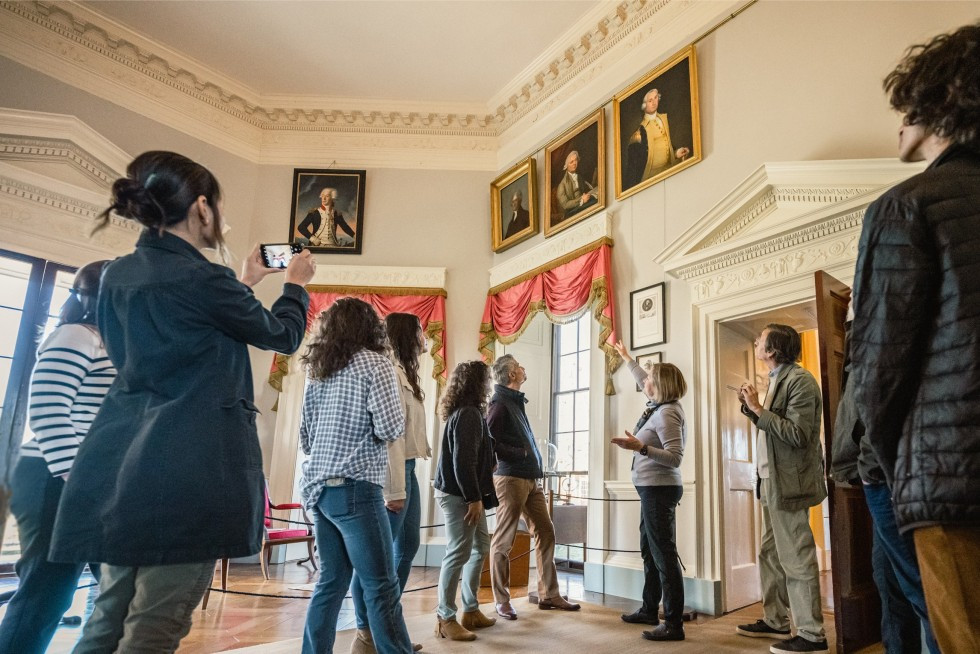 Parlor of Monticello highlighting the interior design and historical artifacts
Parlor of Monticello highlighting the interior design and historical artifacts
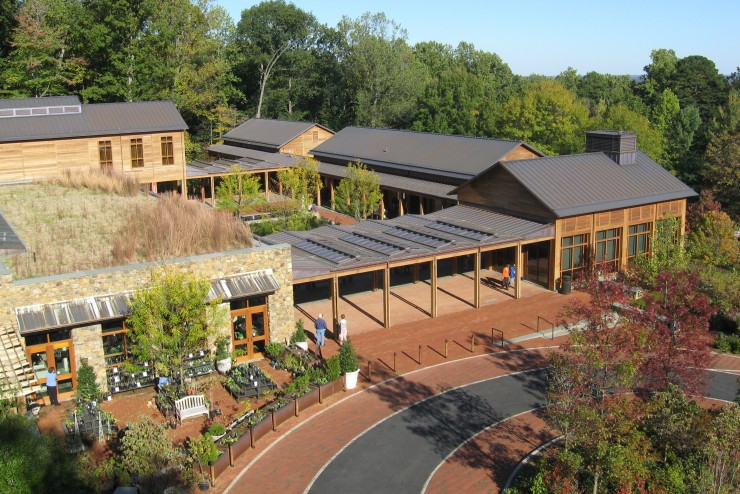 The David M. Rubenstein Visitor Center offering exhibits and services for tourists
The David M. Rubenstein Visitor Center offering exhibits and services for tourists
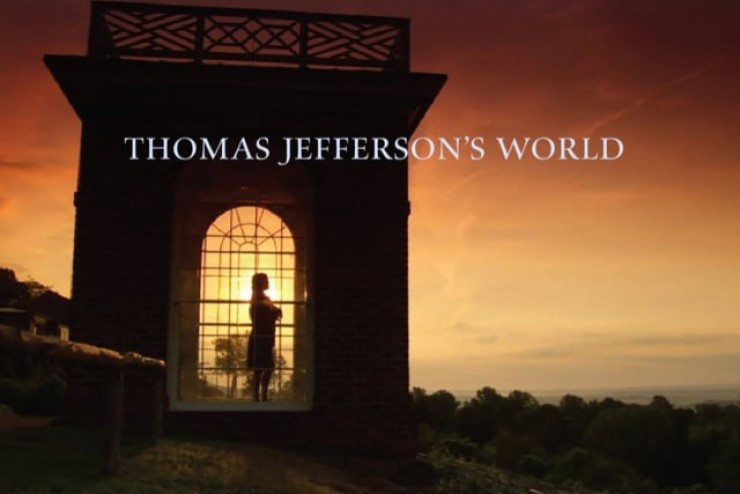 A scene from the introductory film about Thomas Jefferson's World at Monticello
A scene from the introductory film about Thomas Jefferson's World at Monticello
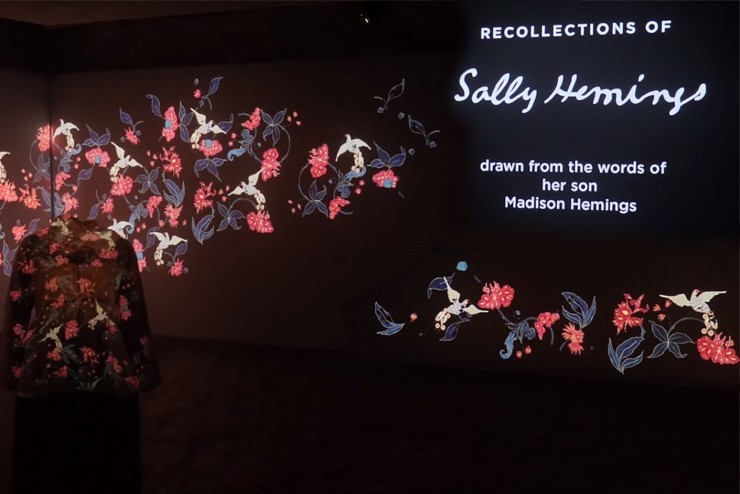 The Wings of the House including kitchens and slave dwellings at Monticello
The Wings of the House including kitchens and slave dwellings at Monticello
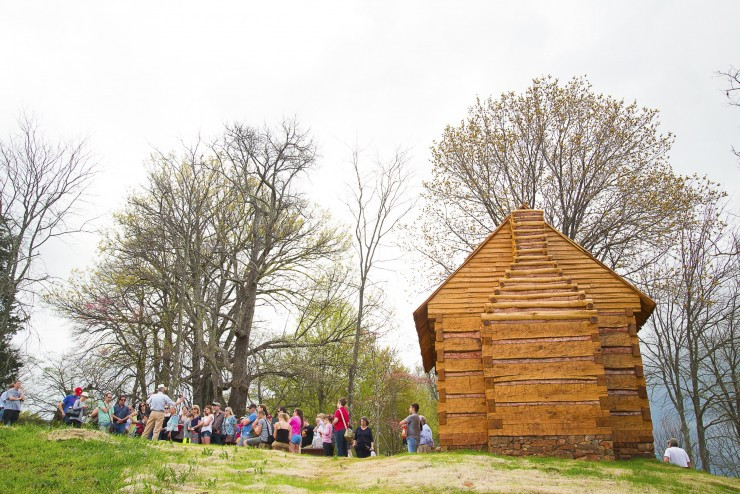 A guided tour exploring Slavery at Monticello
A guided tour exploring Slavery at Monticello
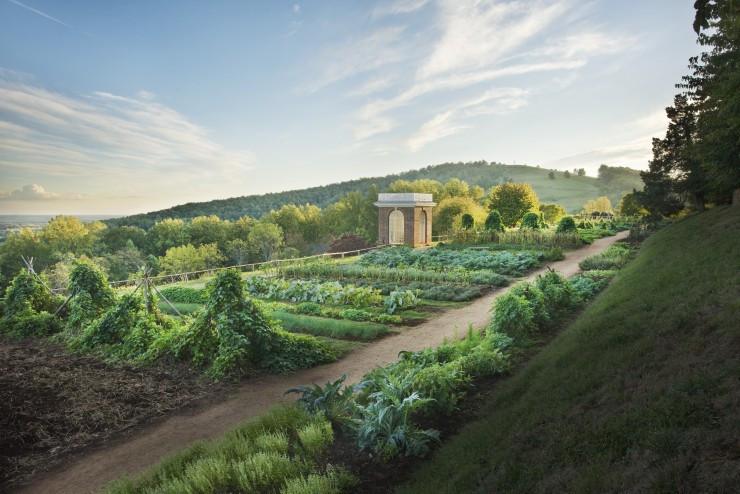 Terraced vegetable garden at Monticello
Terraced vegetable garden at Monticello
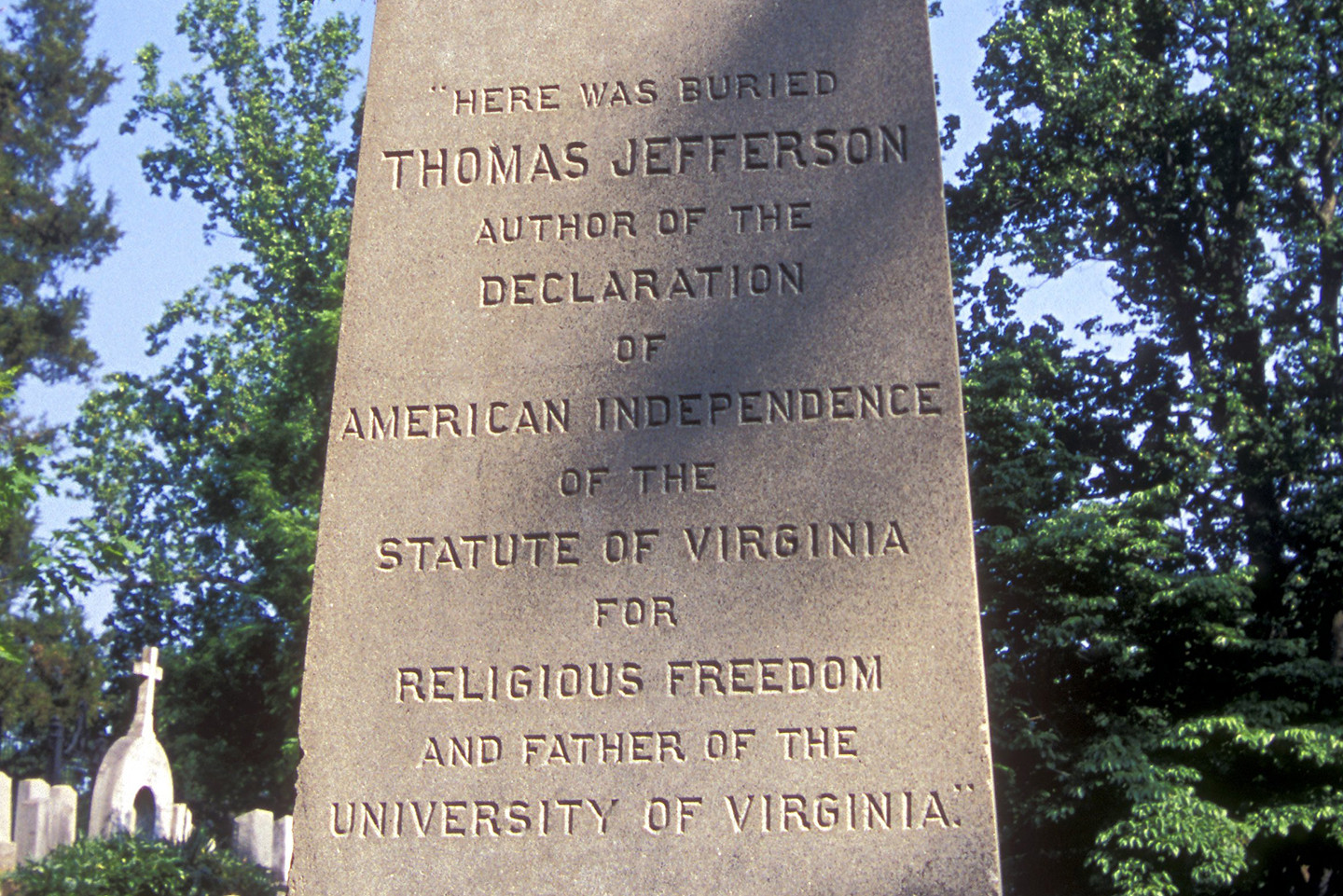 Thomas Jefferson's gravestone in the Monticello Cemetery
Thomas Jefferson's gravestone in the Monticello Cemetery
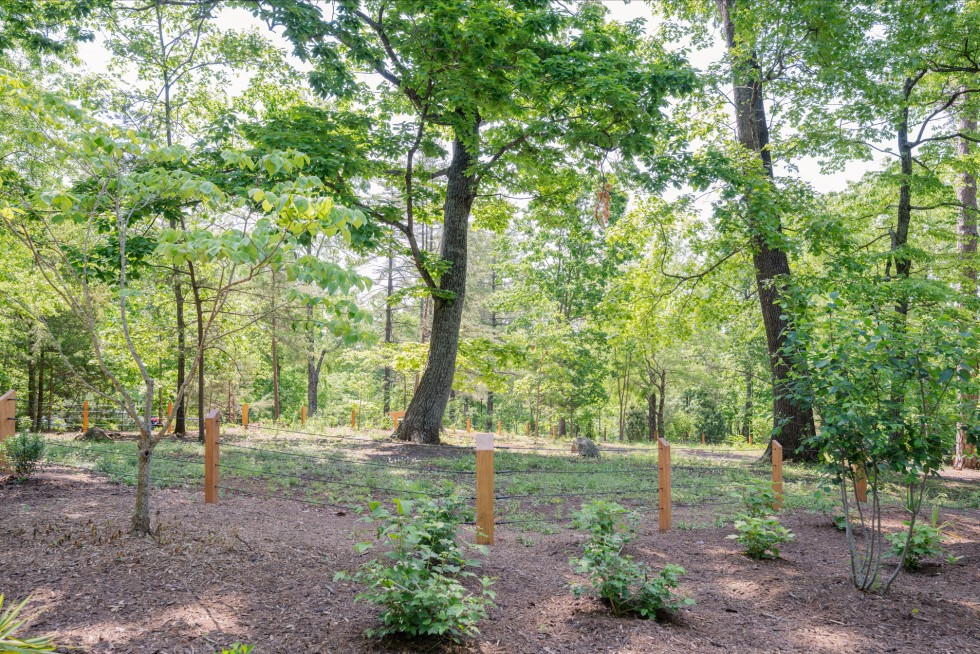 The Burial Ground for Enslaved People at Monticello
The Burial Ground for Enslaved People at Monticello
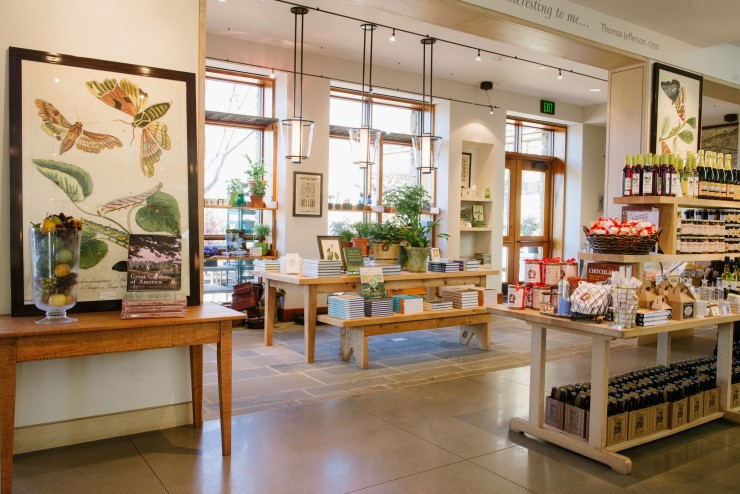 Monticello Shop offering gifts and souvenirs
Monticello Shop offering gifts and souvenirs
 The Monticello Farm Table café
The Monticello Farm Table café
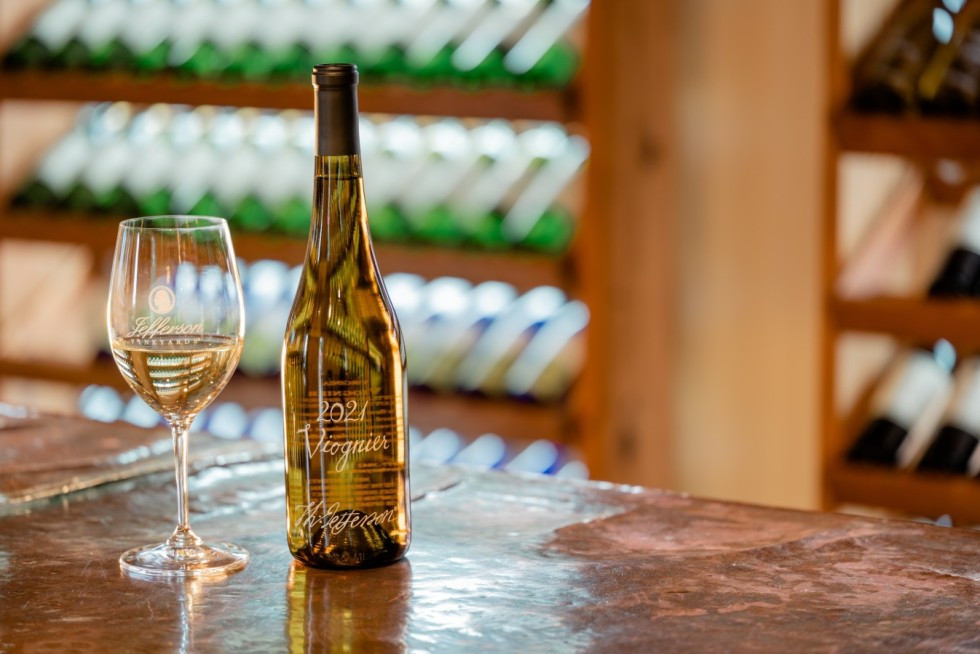 Jefferson Vineyards where visitors can enjoy wine
Jefferson Vineyards where visitors can enjoy wine
 The Saunders-Monticello Trail offering paths and views
The Saunders-Monticello Trail offering paths and views
Frequently Asked Questions About Monticello Tourism
1. Is Monticello Wheelchair Accessible?
Yes, Monticello offers wheelchair accessibility with designated routes and accommodations to ensure all visitors can explore the historical site comfortably. Wheelchair rentals are available.
2. Can I Take Photos Inside Monticello?
Non-flash photography is allowed in most areas inside Monticello, allowing you to capture the beauty and history of the site, though certain restrictions may apply.
3. Are There Guided Tours of Monticello Available?
Yes, guided tours of Monticello are available, offering in-depth insights into the life of Thomas Jefferson, the architecture, and the history of the estate.
4. How Much Does It Cost To Visit Monticello?
The cost to visit Monticello varies depending on the type of tour and ticket purchased, with options for general admission, specialty tours, and discounts for certain groups. Check the official Monticello website for current pricing.
5. What Should I Wear When Visiting Monticello?
Comfortable clothing and shoes are recommended when visiting Monticello, as you will be doing a lot of walking, especially if you plan to explore the gardens and grounds.
6. Can I Bring Food and Drinks into Monticello?
Outside food and drinks are generally not allowed inside the Monticello house, but you can enjoy them in designated picnic areas. The Monticello Farm Table café offers dining options.
7. Is There Parking Available at Monticello?
Yes, free parking is available at the David M. Rubenstein Visitor Center, with shuttle services to the main house and other attractions on the Monticello estate.
8. Are Pets Allowed at Monticello?
Pets are not allowed inside the Monticello house or other buildings, but they are permitted on the grounds if kept on a leash.
9. How Far Is Monticello From Charlottesville?
Monticello is located approximately 5 miles (8 kilometers) southeast of Charlottesville, making it a short and easy drive from the city center.
10. What Other Historical Sites Are Near Monticello?
Other historical sites near Monticello include Highland (the home of James Monroe), the University of Virginia, and various Civil War battlefields, offering a rich exploration of American history.
Planning your Monticello tourism adventure is easy with SIXT.VN! Overcome the challenges of organizing your trip with our convenient services. From seamless airport transfers to comfortable hotel bookings and expertly crafted tour packages, we ensure a stress-free and enriching experience. Let SIXT.VN take care of the details so you can focus on exploring the historical wonders of Vietnam. Contact us today to start planning your unforgettable journey! Address: 260 Cau Giay, Hanoi, Vietnam. Hotline/Whatsapp: +84 986 244 358. Website: SIXT.VN.



